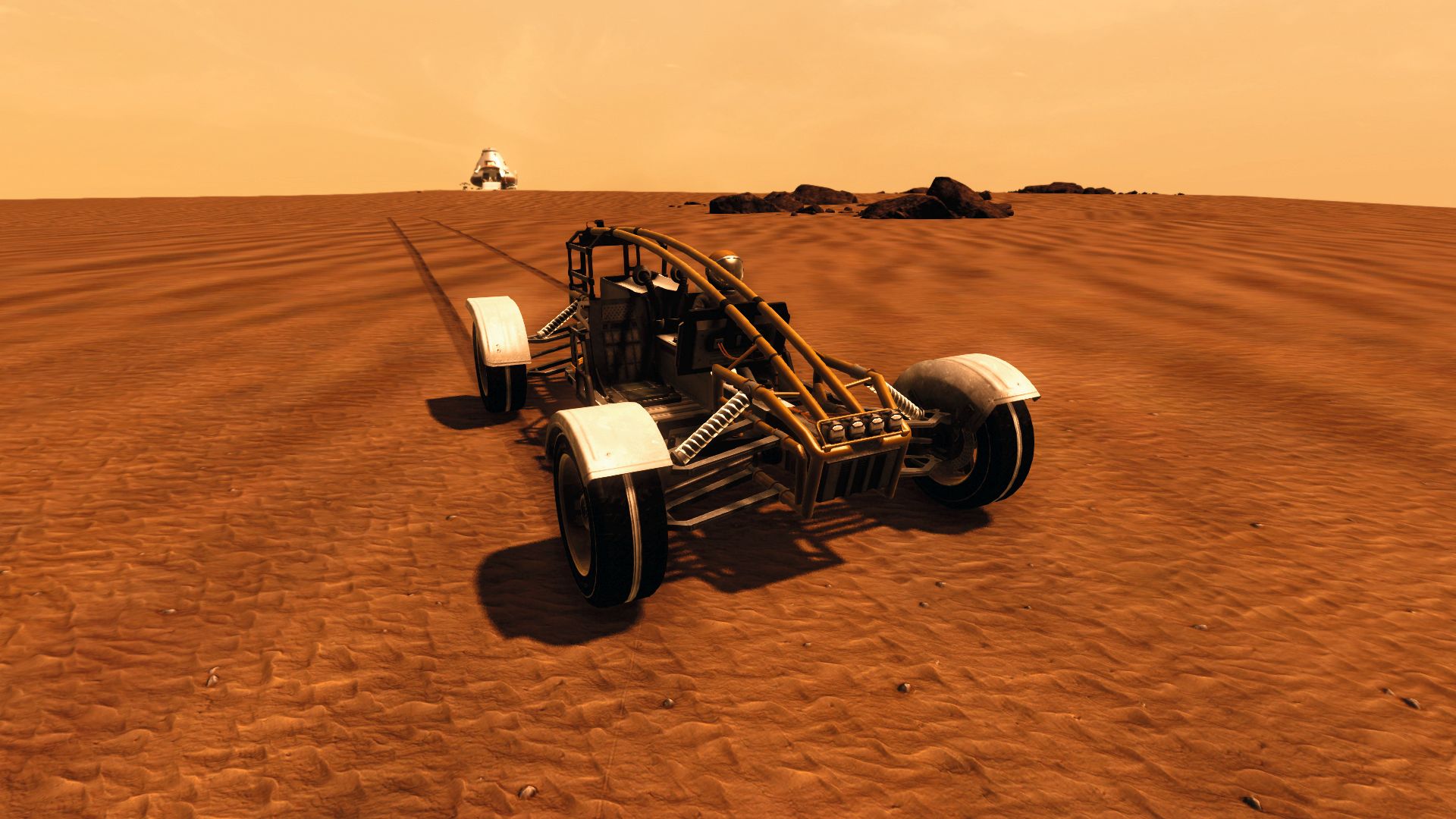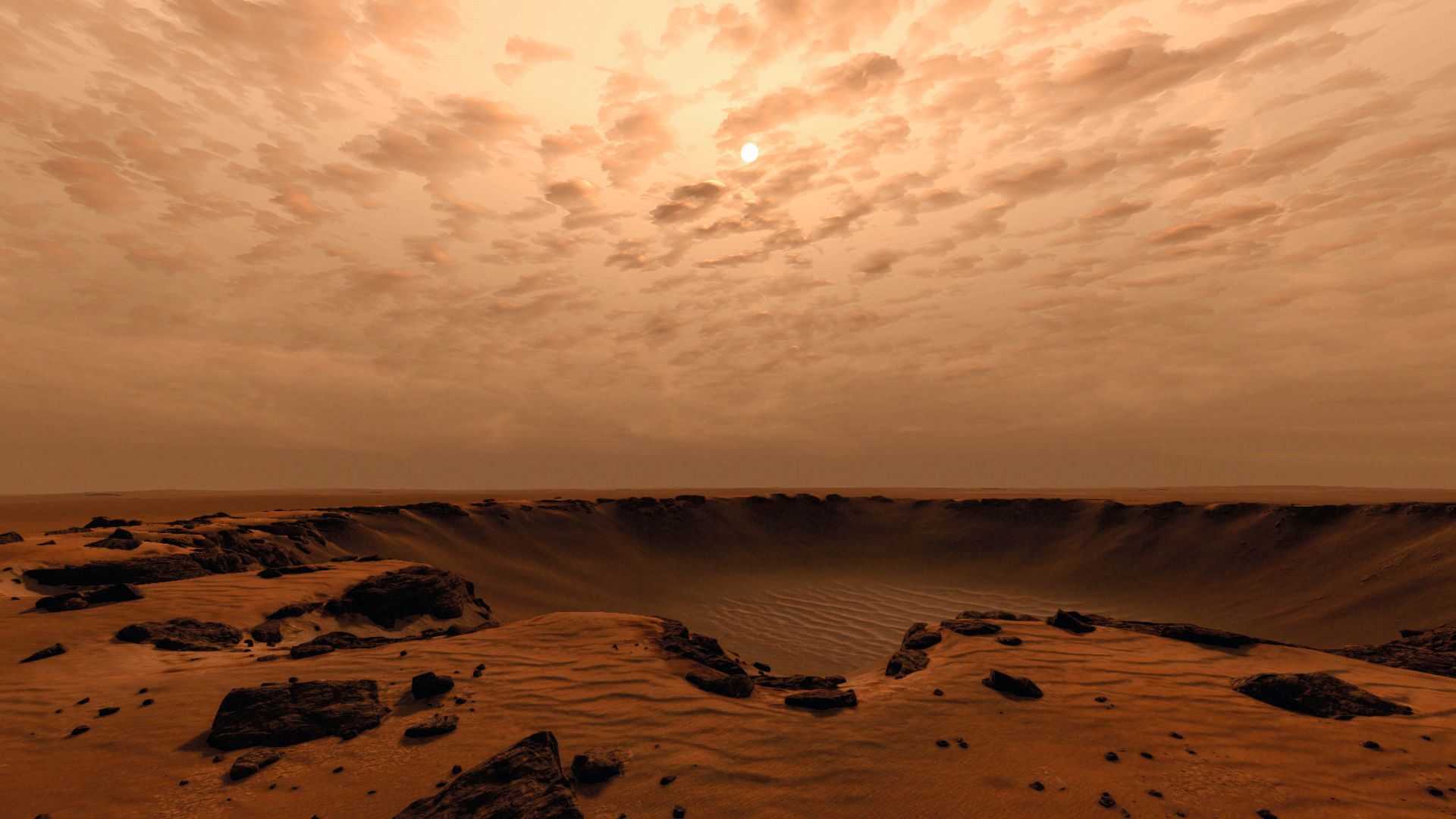Building a mighty space base in Take On Mars

The Meridiani Planum is a vast, empty desert of volcanic basalt, and my home for the foreseeable future. There was an accident—I remember a storm, an explosion, and not much else—and now I’m alone. NASA thinks I’m dead, the rest of my team are on their way home, and the next mission to Mars is five years away. I’m pretty much fucked.
The first thing I hear when I wake is beep, beep, beep. A red light is flashing in my helmet, warning me that I have three minutes of oxygen left. I struggle to my feet and scan the horizon. Nothing. I’m surrounded by a red, flat plain littered with rocks and craters. Then I spot something in the distance: a curiously geometrical shape silhouetted against the dusky pink of the Martian sky.
The lander! The craft we touched down in, which is stocked with supplies including sweet, precious, life-giving air. It’s far away, but I might just make it. Beep, beep, beep. I have to run in bursts, because the exertion of a prolonged sprint will make me take deep, wasteful breaths. I reach the lander and slam the button that opens the cargo bay. It’s achingly, painfully slow. The beeping intensifies. Thirty seconds left.
The door slides open and I dash inside, taking the elevator to the pressurised safety of the crew quarters. Tearing off my helmet, I collapse in an exhausted heap. I made it! But the elation quickly fades when I remember that I’m still alone on a hostile planet with limited food and water, no way to communicate with Earth, and five years to kill. Not the best situation I’ve ever been in.
I could live here in the lander, I suppose. It has beds, food, water. But when the supplies run out—there’s about a month’s worth in the hold—I’ll either starve or die of thirst. I need space to grow my own food and somewhere more comfortable to live.

I venture outside again. Located just south of the equator, the Meridiani Planum is scattered with a crystalline mineral called hematite: evidence that hot springs may have bubbled here millions of years ago. Now it’s a wasteland, pockmarked with craters. In the distance, jutting incongruously out of the emptiness, is a strange ridge formation. Curiosity gets the better of me.
The lander is equipped with a scouting buggy—a glorified go-kart, really—which I drive towards the ridge. It’s incredibly slow, only marginally faster than walking. When I reach the rock formation, I realise it’s the lip of an immense crater: the Victoria crater to be precise. Half a mile wide and seventy metres deep, it’s a colossal thing, but not much use to me. I’m gazing across it, listening to the eerie, lonely howl of the wind, when a message flashes up on my HUD: Solar event incoming.
The biggest gaming news, reviews and hardware deals
Keep up to date with the most important stories and the best deals, as picked by the PC Gamer team.
I make it back with seconds to spare and wait for the storm to pass. I decide that’s enough exploring for me.
Mars is routinely pounded by solar storms. If I get caught in one, even with a suit on, I’ll receive a lethal dose of radiation. And according to the data on my HUD, one is on its way. I jump back in the buggy and start trundling back to the lander, which suddenly looks impossibly far away. It’s another close call, but I make it back with seconds to spare and wait for the storm to pass. I decide that’s enough exploring for me. I’ve got plenty of problems to deal with as it is.
I eat a freeze-dried steak for dinner and sleep on a small cot bed in the lander to escape the chill of the Martian night. Near the equator, during the day, temperatures on Mars can reach a balmy 20 degrees; but at night they drop as low as -70. When the sun rises, I decide to initiate phase one of Operation Don’t Die: building myself somewhere to live. I unpack the enormous 3D printer stored in the cargo bay and assemble it outside.
If it’s set in space, Andy will probably write about it. He loves sci-fi, adventure games, taking screenshots, Twin Peaks, weird sims, Alien: Isolation, and anything with a good story.


